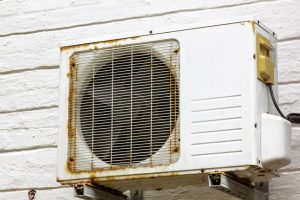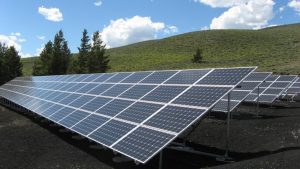
For many years, a congregation in the central valley of California, the breadbasket of America, thrived by serving a cross-section of the American population — from migrant workers to white-collar business professionals and everyone in between.
This particular parish was built back in the 1960s, outgrew existing spaces, and added buildings in the 1970s and 1980s, as many congregations did during this time. Renovations of existing spaces were completed as problems were identified, from the occasional new flooring project to volunteer Saturday painting work parties. Through the first few decades of its existence, the church always seemed to get by with no big property surprises.
As energy continued to get more expensive, however, the budget became more strained and could not keep up with the levels of use to support the congregation’s Sunday worship and various weekly activities, from Bible studies to day-to-day operations.
The Achilles heel of the parish was finally coming to the fore. Systems installed 30-plus years ago simply use a lot more electricity than those available today; but of course, those available today cost money, and the parish had no capital plan in place to prepare for these costly assets’ eventual failure and replacement.
The parish was struggling financially to keep up with its 52 separate HVAC units, with only 14 being less than 30 years old. Those that hadn’t been replaced since the buildings were constructed had far outlived their typical useful life, but it would cost at least $350,000 to replace them all at once.
Embracing a proactive solution
Rather than ignoring the problem, leadership took a step back and looked at the problem from a wider angle. Then, they tackled the issue head-on!
Where many parishes would simply “band-aid” indefinitely, or take up a special collection to fund a new unit each time one failed, this group pondered the site as a whole and came up with a very novel approach.
Leadership engaged the services of an engineering firm to evaluate energy use campus-wide. This survey helped them identify two key elements of high energy use and waste: lighting and HVAC systems.
Furthermore, the survey helped identify high-use areas for each of those components; this was helpful, as they knew the funds were not readily available to simply replace old light fixtures and HVAC systems throughout the campus.
Armed with this valuable information, leadership changed the church’s financial course and embarked on a major site-wide, multi-year project that will set up the parish with a much stronger financial footing for decades to come.
Information drives savings
Reducing energy use and maintenance costs gave the parish the buying power to pursue a photovoltaic solar collection system designed around a new energy footprint for the campus (based on planned replacements of all the energy-wasting fixtures and systems throughout the campus).

Through installation of the solar system, on-bill financing through the local energy provider, replacement of lighting to more energy-efficient bulbs and fixtures — as well as replacement of high-use HVAC systems — the parish was able to drastically reduce the energy purchased from the electricity grid. Savings from lower energy costs helped fund replacement of moderate-use HVAC systems, further reducing energy use.
This energy reduction plan was crafted in tandem with a capital plan from Association Reserves. The capital plan identified not only all the assets involved in the energy reduction project, but all the major, predictable capital projects throughout the site, from roofing to parking lots, carpeting to audio/visual systems. Having this financial plan in place and updated annually gave leadership the confidence to move forward in a way that balances upgrades to the campus, while also setting aside a prudent amount of funds each year to offset deterioration.
As a result, future leadership teams will have a source of funds and a plan for keeping the campus lean financially, which makes the most of the funds entrusted to them that support the mission of the church — preaching the gospel and making disciples.
While leadership must never become complacent and simply rely on old data, the plan and infrastructure are now in place, allowing the church to move forward on a path that reduces the amount of time and dollars needed to run the campus efficiently, and in a way that truly serves His good work!
Matthew Swain, RS, is Worship Facilities Specialist at San Diego-based Association Reserves. He is a certified Reserve Specialist and has been preparing capital plans for non-profit organizations across the country for more than a decade. Swain currently serves as the national representative for Association Reserves worship facility clients.
This article originally appeared in Church Executive Magazine.

